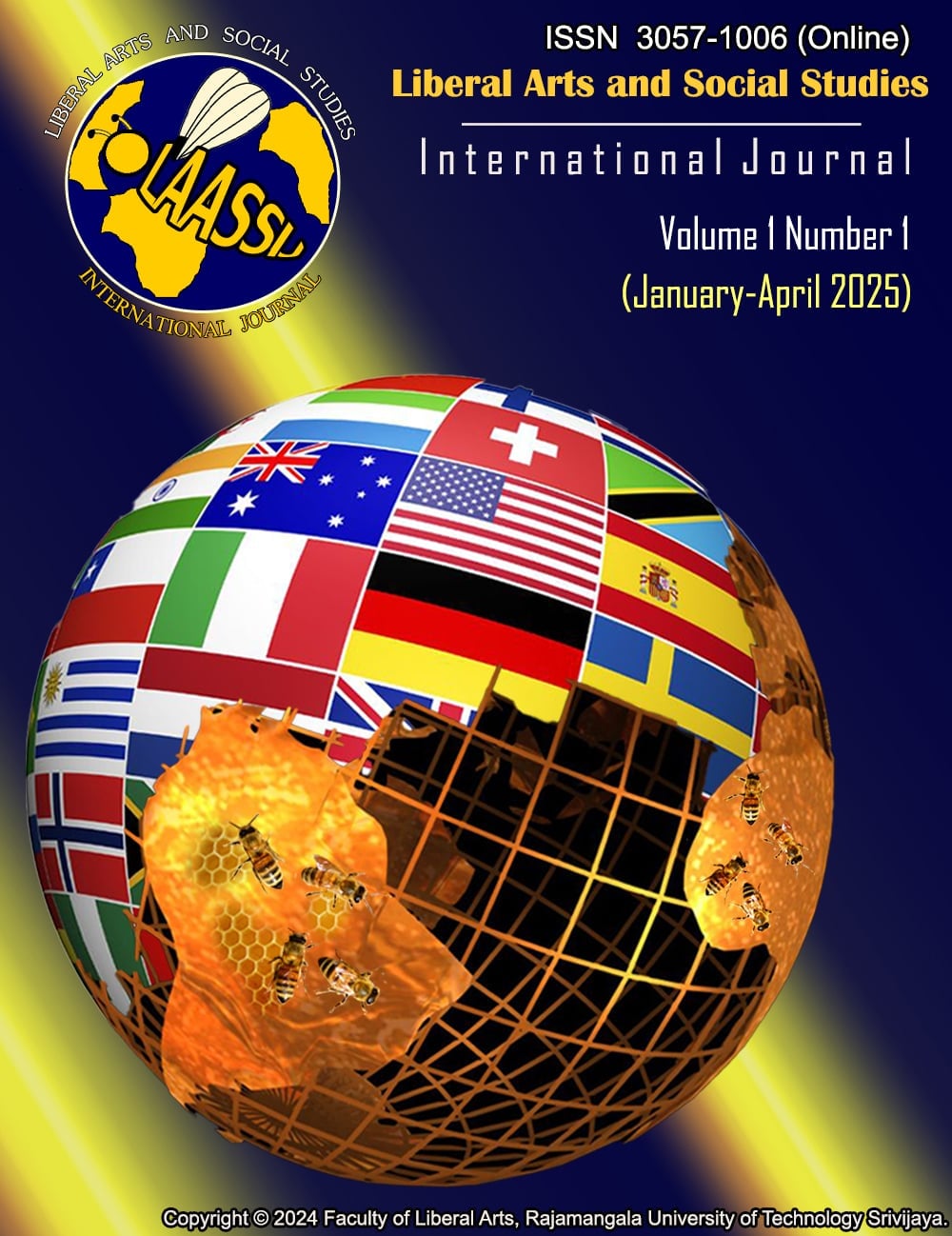Do Demographic Factors Influence the Time Spent on Social Media? A Study Among the University Students of Arunachal Pradesh, India.
Main Article Content
Abstract
Social media usage has experienced significant growth over the years, offering numerous advantages including efficient and rapid communication, as well as information sharing and gathering. As its utility expands, social media has seen rapid adoption among students, this has led to numerous studies contributing valuable insights into its frequency and types. Hence, to add to the already existing knowledge, the current study examined social media usage within situational contexts, specifically exploring the times at which individuals engage with social media. Thus, this study aims to examine whether there are differences in the way time is spent on social media usage across different demographic groups (age, gender and family type) of students. The present research work adopted exploratory research design to achieve the objective of the study. A convenient sampling technique was used to gather data from 547 participants enrolled in an institute of Arunachal Pradesh. Data was collected through a structured questionnaire. The Mann-Whitney U tests and Kruskal Wallis H test were used to compare groups. The study found no significant difference in social media usage across age groups within various situational contexts. However, it did uncover a notable gender difference, with male students displaying a greater inclination to use social media in public spaces compared to their female peers. The analysis further showed a significant difference in social media usage during academic-related periods among the four family types.
Article Details

This work is licensed under a Creative Commons Attribution-NonCommercial-NoDerivatives 4.0 International License.
References
Adam, A., Howcroft., & Richardson, H. (2004). A decade of neglect: reflecting on gender and IS. New Technology, Work and Employment ,19 (3), 222-240. DOI:10.1111/j.1468-005X.2004.00139. x.
Azizi, S.M., Soroush, A., &Alireza, K. (2019). The relationship between social networking addiction and academic performance in Iranian students of medical sciences: A cross-sectional study. BMC Psychology, 7(28). DOI:10.1186/s40359-019-0305-0.
Bernard, C. E. (2020). Lonely Zs: Examining the Relationships among Time Spent on Social Networking Sites, the Fear of Missing Out (FOMO), and Loneliness among Undergraduate College Students. Doctoral Dissertations and Projects. 2457. https://digitalcommons.liberty.edu/doctoral/2457.
Burke, M., Marlow, C., & Lento, T.M. (2010). Social network activity and social well-being. Proceedings of the SIGCHI Conference on Human Factors in Computing Systems.1909-1912. DOI:10.1145/1753326.1753613.
Duggan, M., & Smith, A. (2013). Demographics of key social networking platforms. Retrieved 2023, from Pew research center: https://www.pewresearch.org/internet/2013/12/30/demographics-of-key-social-networking-platforms/.
Hoy, M., & Milne, G. (2013). Gender Differences in Privacy-Related Measures for Young Adult Facebook Users. Journal of Interactive Advertising, 10 (2), 28-45. DOI:10.1080/15252019.2010.10722168.
Huang, W-H. D., Hood, D. W., & Yoo, S. J. (2013). Gender divide and acceptance of collaborative Web 2.0 applications for learning in higher education. Internet and Higher Education, 16, 57–65. DOI: 10.1016/j.iheduc.2012.02.001.
Isreal, G. D. (2003). Using formulas to calculate a sample size for small populations. Determining Sample Size 1, 1-5.
Krasnova, H., Veltri, N, Nicole, E., & Buxumann, P. (2017). Why men and women continue to use social networking sites: The role of gender differences. Journal of Strategic Information System, 26(4), 261-284. DOI: 10.1016/j.jsis.2017.01.004.
Kraut, R., Kiesler, S., Boneva, B., Cummings, J., Helgeson, V., & Crawford, A. (2002). Internet paradox revisited. Journal of Social Issues, 58, 49–74. DOI:10.1111/1540-4560.00248.
Kuss, D. J., & Griffiths, M. D. (2011). Online social networking and addiction--a review of the psychological literature. International journal of environmental research and public health, 8 (9), 3528-3552. DOI: 10.3390/ijerph8093528.
Misra, N., Dangi, S., & Patel, S. (2015). Gender Differences in Usage of Social Networking Sites and Perceived Online Social Support on Psychological Well Being of Youth. The International Journal of Indian Psychology, 3 (1). DOI: 10.25215/0301.008.
Olufadi, Y. (2016). Social networking time use scale (SONTUS): A new instrument for measuring the time spent on the social networking sites. Telematics Informatics, 33(2), 452-471. DOI: 10.1016/j.tele.2015.11.002.
Procentese, F., Gatti, F., & Di Napoli, I. (2019). Families and Social Media Use: The Role of Parents’ Perceptions about Social Media Impact on Family Systems in the Relationship between Family Collective Efficacy and Open Communication. International Journal of Environmental Research and Public Health, 16(24). DOI:10.3390/ijerph16245006.
Perrin, A. (2015). Social Networking Usage: 2005-2015. Pew Research Centre. Retrieved from https://www.pewresearch.org/internet/2015/10/08/social-networking-usage-2005-2015/.
Pew Research. (2021). Social Media Fact Sheet. Washington DC: Pew Research Center. Retrieved from https://www.pewresearch.org/internet/fact-sheet/social-media/.
Rafi Alnjadat, Malek M. Hmaidi, Thamer E. Samha, Mhd M. Kilani., & Ahmed M. Hasswan. (2019). Gender variations in social media usage and academic performance. Journal of Taibah University Medical Sciences, 12 (4), 390-394. DOI: 10.1016/j.jtumed.2019.05.002.
Ryan, T., Chester, A., Reece, J., & Xenos, S. (2014). The uses and abuses of Facebook: A review of Facebook addiction. Journal of Behavioral Addictions, 3, 133–148. DOI: 10.1556/JBA.3.2014.016.
Stankovska, H, Angelkovska, S., & Padiloska, G. (2016). Social Networks Use, Loneliness and Academic Performance among University Students. Higher Education, Lifelong Learning & Social Inclusion, 14 (1).
Tariq, A., Muñoz Sáez, D., & Khan, S. R. (2022) Social media use and family connectedness: A systematic review of quantitative literature. New Media and Society, 24(3), 815-832. DOI:10.1177/14614448211016885.
Teo, T. S. H., & Lim, V. K. G. (2000). Gender differences in Internet usage and task preferences. Behaviour & Information Technology, 19 (4), 283–295. DOI:10.1080/01449290050086390.
Thayer, S. E., & Ray, S. (2006). Online communication preferences across age, gender, and duration of Internet use. Cyberpsychology & Behavior: The Impact of the Internet, Multimedia and Virtual Reality on Behavior and Society, 9 (4), 432-440. DOI: 10.1089/cpb.2006.9.432.


